Treading the Ground: Researching for a Medieval Novel
I’ve just returned from a research trip to Narbonne, Carcassonne, Aigues-Mortes, and Conques. There’s nothing like treading the ground to inspire writing. I thought a photo-journal of the trip might be of interest for some of you.
NARBONNE
I am giving a couple of talks on medieval Occitan female lords over the next few months. 10-12% of lords in Occitania (southern France) in the 11th century were female. My visits to Narbonne and Carcassonne were related to preparing for those talks. Ermengard, viscountess of Narbonne; Ermessende of Carcassonne, countess of Barcelona; and Raingarde de La Marche, countess of Carcassonne, are among the female lords I am researching.
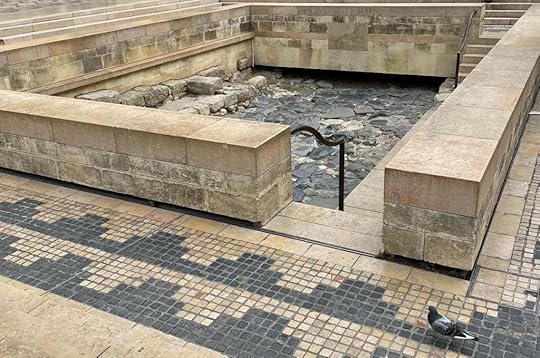
A section of the Roman road, the Via Domitia, exposed in front of the archbishop’s palace in Narbonne. In the medieval period, the Roman roads were still among the best ways to travel.
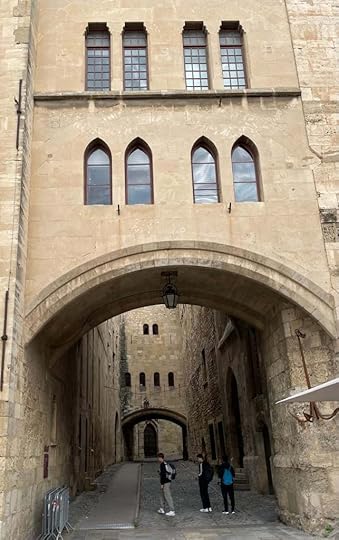
The Passage de l’Ancre (anchor) in Narbonne runs between the new archbishop’s palace (14th-18th centuries) on the left and the old one (9th-13th centuries) on the right. You can see an anchor hanging at the entrance. The name signified the archbishop’s right to collect port and fishing taxes.
CARCASSONNE
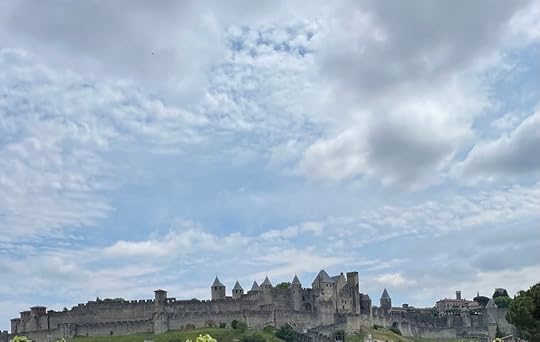
I am giving a talk about Raingarde and her sisters, Almodis de La Marche and Lucia de La Marche as part of the Occitan University at the Lou Viel Chateau, Saint-Martin Laguepie 81170, Friday 19 July 9pm. With the assistance of my collaborator, Amandine Rey, the talk will be in English and French. The participants in our workshop on making your own troubadour songs will also present their creations.
AIGUES-MORTES
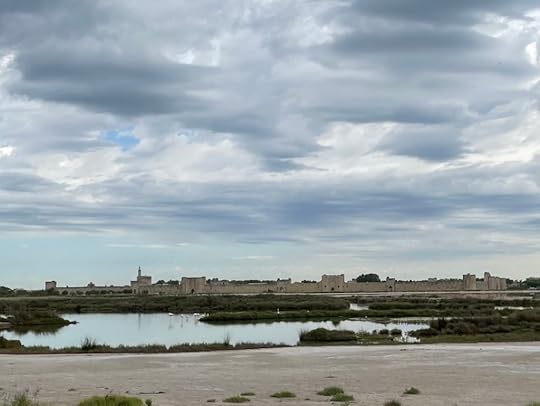
I travelled to the walled town of Aigues-Mortes to find out about medieval salt production. I am setting a scene in my new novel, Love’s Knife, in Aigues-Mortes. The medieval salt trade plays a significant role in the plot of this story, and in the second book in the series, where my characters will be travelling into the Pyrenees and the Iberian kingdoms.
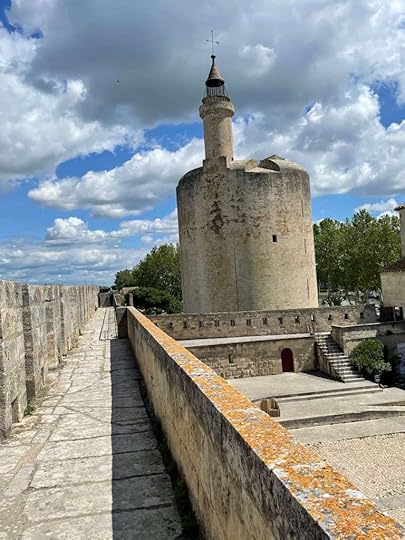
I walked around the city ramparts, which gave great views down into the city and out across the pink salt lakes. The Constance Tower, seen here, was built by King Louis IX in 1242. It replaced an earlier defensive tower built in 791 by Charlemagne to protect the saltworks.
Inside the city, the air was full of the jasmine that was flowering everywhere.
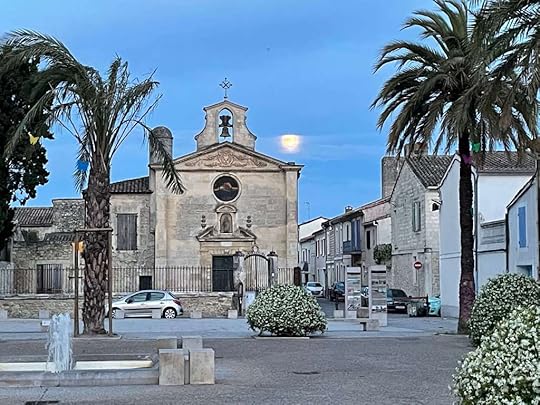
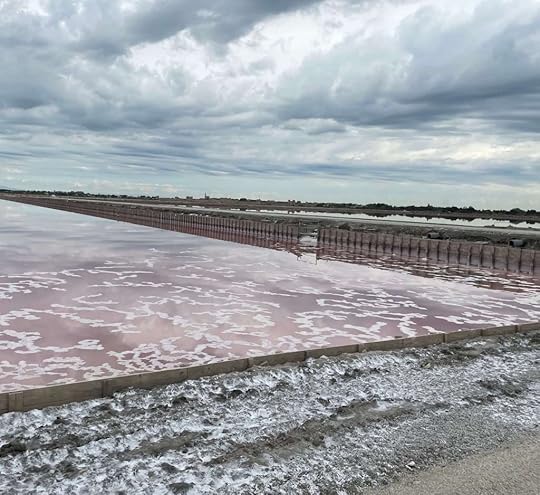
Beyond the city walls, a vast system of shallow lakes allowed for evaporation and the formation of salt in pink-tinged pools where flamingoes waded.
The Salt Museum had a collection of tools and baskets for collecting the salt, which probably were similar in the medieval period.
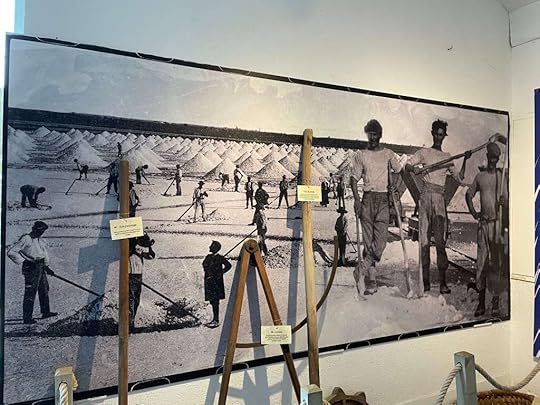
CONQUES
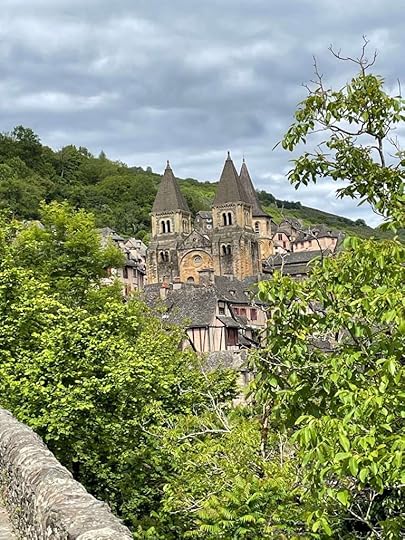
Conques Abbey on one of the pilgrim routes to Compostela. Conflicts between the pope and the monastery of Cluny over the developing pilgrim routes are also significant to the plot of Love’s Knife. Toulouse and Conques were both part of this conflict.
A scene in Love’s Knife takes place in Conques. The novel will be published on 2 September and is on pre-order now.
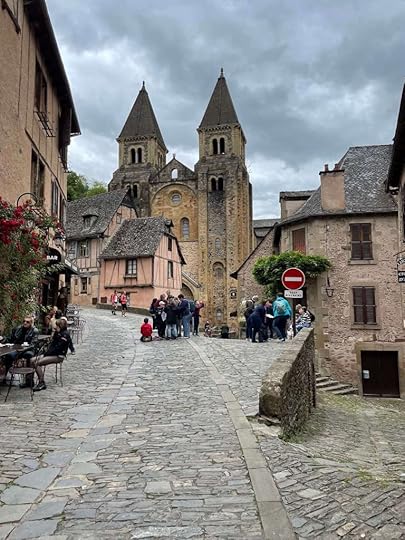
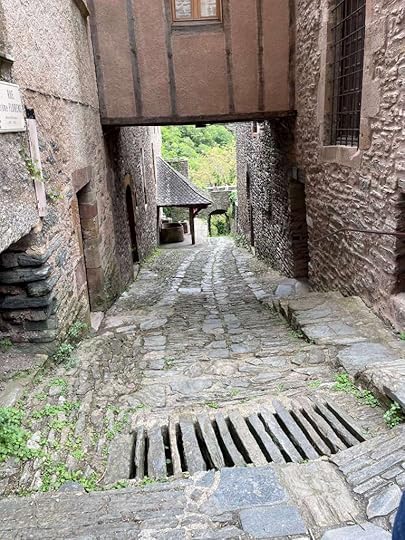
Note the stone drain.
Stonemason’s humour. One of the characters in my novel is a cathedral stonemason.
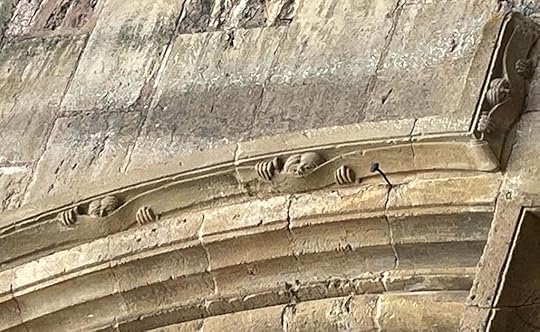
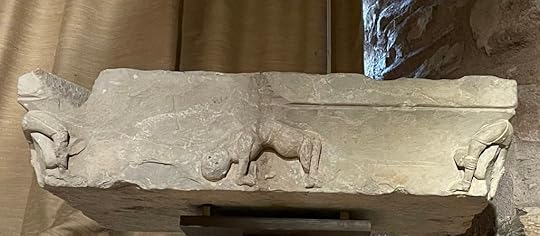
Medieval yoga perhaps?
I’ve returned home to writing with lots of inspiring material. Love’s Knife is being serialised a chapter a week on Substack.



